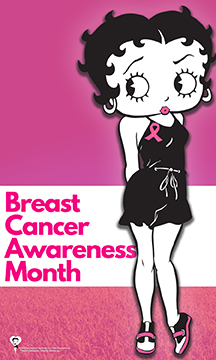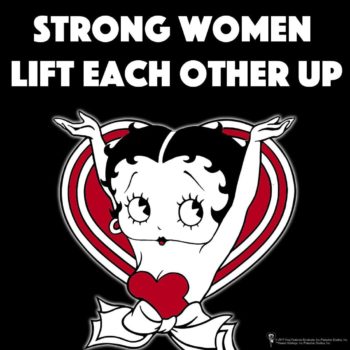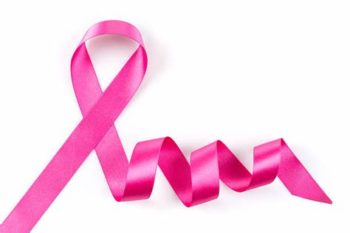 FACING THE ISSUES WITH BETTY BOOP
FACING THE ISSUES WITH BETTY BOOP
Once again everyone, it’s OCTOBER and BREAST CANCER AWARENESS MONTH. As many of you know, Breast Cancer is the most common cancer in the world for women. It affects over 200,000 fabulous females every year and is, unfortunately, the second most lethal cancer as well.
Accordingly, I’m devoting this FACTUAL FRIDAY to another discussion of this ongoing health crisis for women the world over.
Personally, I’ve survived three different cancers – the third of which was breast cancer. I was fortunate. I caught it early and was able to treat it successfully. And, several women in my extended family have experienced breast cancer as well.
So, it’s with great dedication that year after year I share this important information with you. And, as in years’ past I share this obligation with a friend of mine, the iconic Betty Boop.
Now, Betty Boop is a cartoon character that was created by my husband’s grandfather, Max Fleischer. My husband and I still run the family business known as Fleischer Studios, and Betty is a hugely important and popular part of our family. So, whenever we can we involve Betty in important causes in which her visibility brings a greater awareness to the cause, we jump at the chance.
Similar to the way in which Ronald McDonald helps lift the spirits of children fighting cancer, I’ve found the image of Betty with her optimism, integrity and positive outlook helps soften the fear and trepidation that can accompany a discussion on breast cancer. She is an international Ambassador of Goodwill who brings a bit of light into a place that can be rather dark. And, for that reason she is my co-pilot today as we both cover the basics of breast cancer awareness.
To begin, breast cancer is highly survivable IF it’s caught early. And, to catch it early we need to know our risks and the screening procedures that are essential for early detection.
So, please come with BETTY AND ME as we review the most COMMON RISK FACTORS FOR BREAST CANCER:
1) GENDER. Women are about 100 times more likely to develop breast cancer than men.
2) RACE. Of the many types of breast cancer, most are more common among Caucasian women than women of other races.
3) AGE. Like most cancers, our risk increases as we get older. Typically, breast cancer affects women over the age of 55.
4) MENSTRUAL AND REPRODUCTIVE HISTORY. Our risk for breast cancer increases with a longer cycle of menstruation. In addition, women who have never had children or who had a child later in life also have an increased risk for the disease.
5) FIBROSIS. This is a condition in which the breast tissue is abnormally dense. This was my primary risk factor for breast cancer. And, not only does it increase our risk for the disease, but it also makes it more difficult to diagnose the disease.
6) MEDICAL HISTORY. Women who have a first degree relative – a parent, sibling or child – who had breast cancer have an increased risk for developing the disease as well. And, for those of us who have already experienced one breast cancer like myself, our risk of developing another breast cancer is greater.
7) GENETIC ANOMALY. Most of us are familiar with the BRCA1 and BRCA2 genes. If these genes carry a mutation, one’s risk for breast cancer increases significantly. If you are of Ashkenazi Jewish descent or if your family has a history of breast cancer, you may have an anomaly of these genes.
Now, come with BETTY AND ME as we review the ESSENTIAL SCREENING PROCEDURES for detecting breast cancer early:
1) SELF EXAM. It’s so important to know the basics of a self- examination. While instructions can be found on many venues, it’s best to have your physician walk you through the proper steps.
2) OFFICE EXAM. I always schedule an appointment with my physician six months after my mammogram and ultrasound. I refer to this as “the six-month split,” a program that ensures my breasts are examined not once, but twice a year by a professional.
3) MAMMOGRAM. This simple procedure saved my life and it can save yours too! Consult with your primary care physician to determine when your first exam should be conducted and how often you should follow up. And, remember the amount of radiation exposure from this procedure is minimal and less than that from a dental x-ray.
4) SCREENING ULTRASOUND. This is a specific ultrasound that helps detect breast anomalies in women who have fibrosis. I typically have this test on the same day I have my mammogram.
 Unfortunately, we are not yet able to prevent breast cancer. But, knowing our risks and undergoing the proper screening procedures will go a long way in protecting us AND will help us catch it early.
Unfortunately, we are not yet able to prevent breast cancer. But, knowing our risks and undergoing the proper screening procedures will go a long way in protecting us AND will help us catch it early.
In closing, I thank Betty for coming over from the Studio today to help me deliver this important message. And, we both thank all of you for joining us! This is an issue that affects us all. So, LET’S WEAR OUR PINK PROUDLY as a symbol of our COURAGE, DETERMINATION and RESILIENCE as we fight this battle together.
Until next time everyone, have a great month, stay in GOOD HEALTH and . . .
TAKE THE COURSE AND TAKE CHARGE!



Leave a Comment